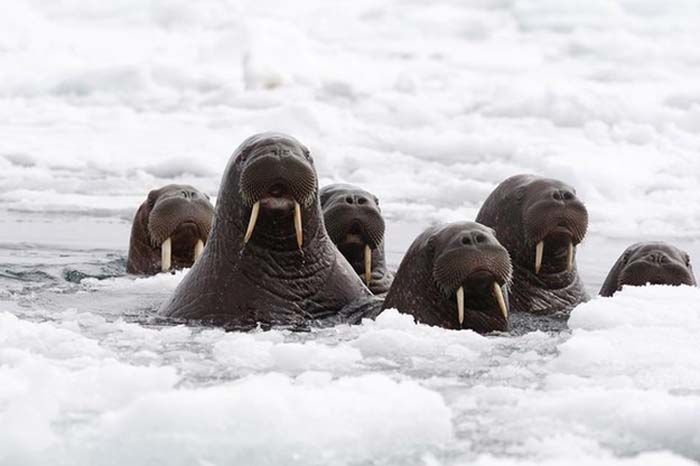|
|
Beach With Lot Of Walruses
|
• Diet
Walruses prefer shallow shelf regions and forage primarily on the sea floor, often from sea ice platforms. They are not particularly deep divers compared to other pinnipeds; their deepest recorded dives are around 80 m (260 ft). They can remain submerged for as long as half an hour.
The walrus has a diverse and opportunistic diet, feeding on more than 60 genera of marine organisms, including shrimp, crabs, tube worms, soft corals, tunicates, sea cucumbers, various mollusks, and even parts of other pinnipeds. However, it prefers benthic bivalve mollusks, especially clams, for which it forages by grazing along the sea bottom, searching and identifying prey with its sensitive vibrissae and clearing the murky bottoms with jets of water and active flipper movements. The walrus sucks the meat out by sealing its powerful lips to the organism and withdrawing its piston-like tongue rapidly into its mouth, creating a vacuum. The walrus palate is uniquely vaulted, enabling effective suction.
Aside from the large numbers of organisms actually consumed by the walrus, its foraging has a large peripheral impact on benthic communities. It disturbs (bioturbates) the sea floor, releasing nutrients into the water column, encouraging mixing and movement of many organisms and increasing the patchiness of the benthos.
|
|









